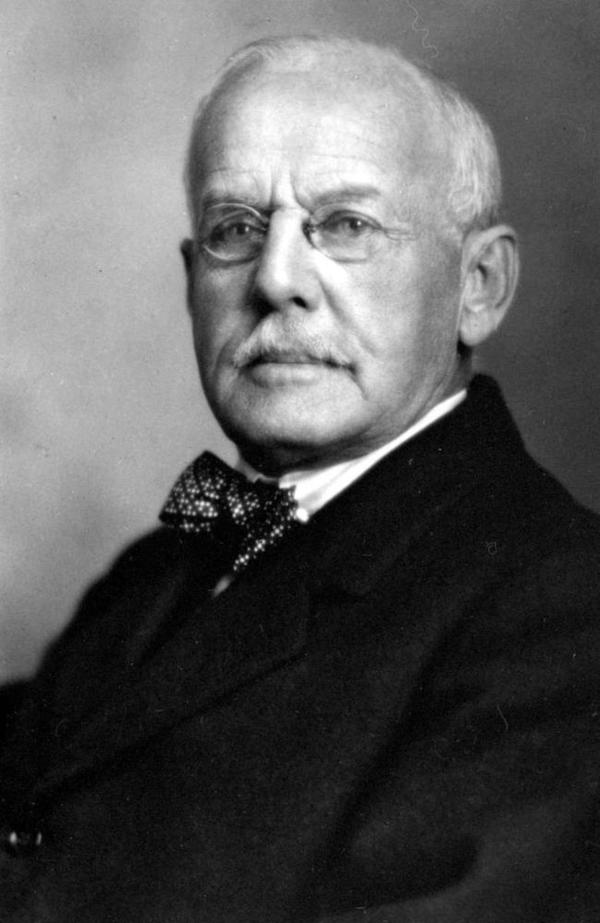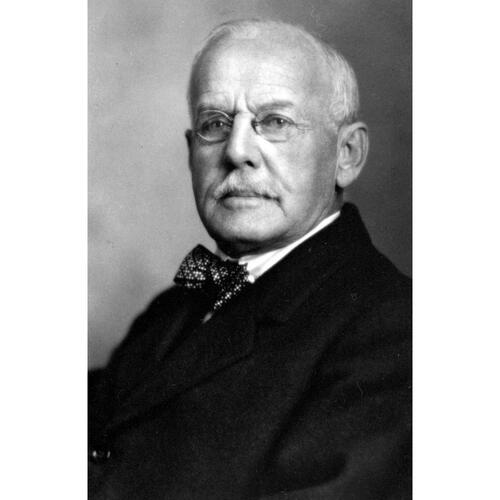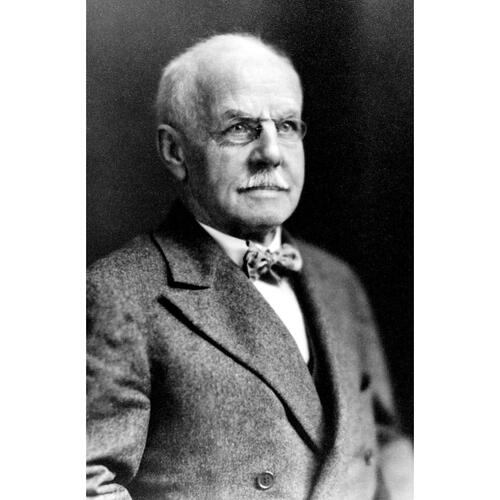
Source: Link
Babcock, John Pease, fisheries expert, civil servant, conservationist, and author; b. 11 June 1855 in St Paul (Minn.), son of Lorenzo Allen Babcock, attorney general of Minnesota Territory, and Amanda Pease; d. unmarried 12 Oct. 1936 in Victoria.
John Pease Babcock helped to establish the scientific and institutional underpinnings of fisheries conservation in British Columbia although he had no formal education in fisheries science. He had been educated in the classics and languages in private schools in Wisconsin and in his father’s native Vermont, and he is said to have attended Lawrence University in Appleton, Wis. He was hired by the government of British Columbia in 1901 on the advice of prominent salmon canner and businessman Robert Paterson Rithet*, who had heard of his fisheries-conservation efforts in California. Since 1891 Babcock had worked for the state’s Board of Fish Commissioners, and at the turn of the century he was seeking to restore salmon runs on the Sacramento River despite the effects of settlement, forest removal, and hydraulic mining. Although it is doubtful that his efforts were successful – in this period few aquaculture experiments with salmon obtained positive results – Babcock had earned a reputation in the fishing industry.
In the early 1900s the government of British Columbia was attempting to expand its activities in fisheries conservation. Constitutional disputes between Ontario and the federal government over fisheries jurisdiction had raised the prospect of an eventual decentralization of authority to the provinces. These questions occurred during a period of expansion in the Pacific salmon fishery, when canneries were being set up in increasing numbers on the lower Fraser River and on the north coast on the Skeena and Nass rivers. Prominent canners feared that a growing industry might reduce the sockeye runs up the Fraser and counselled the provincial government to bolster federal regulation by implementing conservation measures. Babcock entered British Columbia with a mandate to preserve stocks.
For over 30 years Babcock would act in various capacities in the provincial civil service, advising on fisheries and conducting research: from 1901 to 1906 as fisheries commissioner; from 1907 to 1909 as deputy fisheries commissioner; and from 1912 to 1933 as assistant to the deputy fisheries commissioner. His titles changed over time (from 1907 the position of fisheries commissioner was held by an elected official), but the modifications did not signal a demotion. Although he took up work in California from 1910 to 1912, in 1910 he was named to the Dominion–British Columbia Boat-Rating Commission, a royal commission to inquire into the number of boats to be used by the salmon fishery.
On his arrival in the province Babcock had promptly established a survey of spawning beds which he would conduct in most years, concluding with a final report in 1931. Although his enquiries relied heavily on native informants, he offered little sympathy to native fishers. When he set up a hatchery at Seton Lake to boost the supply of sockeye on the Fraser River system, he displaced a native fishery there. The hatchery initiative ended in failure when too few fish returned to justify the effort.
After this initial experiment Babcock abandoned fish culture and focused his attention on monitoring the fishery, commissioning scientific research, and advising on policy. In addition to the surveys he carried out, he collected statistics on both the American and Canadian sockeye fisheries and requested reports from well-respected American scientists. One of these specialists was William Francis Thompson, who would later hold prominent research positions with both the International Fisheries Commission and the International Pacific Salmon Fisheries Commission, but who first reported to Babcock in 1913 about the condition of shellfish beds in British Columbia. Another was Charles Henry Gilbert, the leading zoologist of Pacific fish life in the early 20th century and a founder of the fisheries program at Stanford University in Palo Alto, Calif. Gilbert wrote a series of papers published in the fisheries commission reports starting in 1913 on the life of the sockeye salmon, the major commercial species. Babcock’s inventorial work and the investigations he authorized were the more significant because there were few federal research projects; they only began in earnest with the establishment of a marine station at Nanaimo in 1908.
Babcock’s numerous reports on the state of the province’s fisheries laid the foundations of an inventorial science of Pacific salmon. In addition, he published a popular handbook, The game fishes of British Columbia (Victoria, 1910), which was translated into German, and he won a short-story competition in 1924 for a tale of a rough-hewn trapper named Peace River Joe. He became an important adviser to the provincial government in its dealings with the federal Department of Marine and Fisheries. Beginning with his first report, published in 1902, he advocated negotiations with the United States to control the rate, timing, and intensity of international fishing and to conduct cooperative research. In his correspondence with journalists and politicians throughout the 1920s, he argued in plain and forceful language for the wisdom of cooperative measures and warned of the dangers of leaving the fisheries unmanaged. Familiar with many of the important fisheries officials on both sides of the border, he looked on treaties as the only hope for the long-term reclamation of the Fraser River sockeye, which had been devastated by a landslide at Hells Gate in 1913 and decades of heavy fishing. The adoption in 1923 by Canada and the United States of a convention covering Pacific halibut led to his nomination the following year as chairman of the International Fisheries Commission, which was organized to regulate the halibut fishery. Owing partly to his efforts, a tentative agreement on the salmon fishery was struck between the two countries in 1930 and finally ratified in 1937, a year after his death.
Babcock had settled in Victoria in 1901, and except for the short period in 1910–12 when he returned to California, he would spend the rest of his life there, becoming a British subject on 1 March 1913. In Victoria he engaged in a range of sporting and social activities that befitted his social class and bachelor status. He was a member of the Victoria Golf and Union clubs, and a practising mason. He also helped to found the Queen Alexandra Solarium for Crippled Children and served as a director there. In 1935 he received an honorary lld from the University of British Columbia.
Babcock was one of the most important conservationists in early-20th-century British Columbia. He argued for the rational use of nature’s reserves, criticized waste by industry, and envisioned the necessity of striking international agreements to manage transnational resources. His conservation practice evinced a strong commitment to, and belief in, state regulation and control of the environment for perpetual exploitation.
BCA, GR-1304, file 442/1936; GR-1378; GR-2951, no.1936-09-519052 (mfm.). Univ. of B.C. Library, Rare Books and Special Coll. (Vancouver), International Pacific Salmon Fisheries Commission coll. Univ. of Wash. Libraries, Special Coll. (Seattle, Wash.), ms coll. 0860; 2597.
Victoria Daily Times, 13 Oct. 1936. B.C., Legislative Assembly, Sessional papers, 1902–33 (reports of the commissioner of fisheries, 1901–31). The development of the Pacific salmon-canning industry: a grown man’s game, ed. Dianne Newell (Montreal and Kingston, Ont., 1989). Joanne Drake-Terry, The same as yesterday: the Lillooet chronicle the theft of their lands and resources (Lillooet, B.C., 1989). M. D. Evenden, Fish versus power: an environmental history of the Fraser River (Cambridge, Eng., 2004); “Locating science, locating salmon: institutions, linkages, and spatial practices in early British Columbia fisheries science,” Environment and Planning D: Society and Space (London), 22 (2004): 355–72; “Social and environmental change at Hells Gate, British Columbia,” Journal of Hist. Geog. (London and New York), 30 (2004): 130–53. Geoff Meggs, Salmon: the decline of the British Columbia fishery (Vancouver, 1991). Univ. of B.C. Library, Univ. Arch., “Honorary degrees conferred by UBC”: www.library.ubc.ca/archives/hondegre.html (consulted 26 Sept. 2013).
Cite This Article
Matthew Evenden, “BABCOCK, JOHN PEASE,” in Dictionary of Canadian Biography, vol. 16, University of Toronto/Université Laval, 2003–, accessed December 31, 2025, https://www.biographi.ca/en/bio/babcock_john_pease_16E.html.
The citation above shows the format for footnotes and endnotes according to the Chicago manual of style (16th edition). Information to be used in other citation formats:
| Permalink: | https://www.biographi.ca/en/bio/babcock_john_pease_16E.html |
| Author of Article: | Matthew Evenden |
| Title of Article: | BABCOCK, JOHN PEASE |
| Publication Name: | Dictionary of Canadian Biography, vol. 16 |
| Publisher: | University of Toronto/Université Laval |
| Year of publication: | 2017 |
| Year of revision: | 2017 |
| Access Date: | December 31, 2025 |




